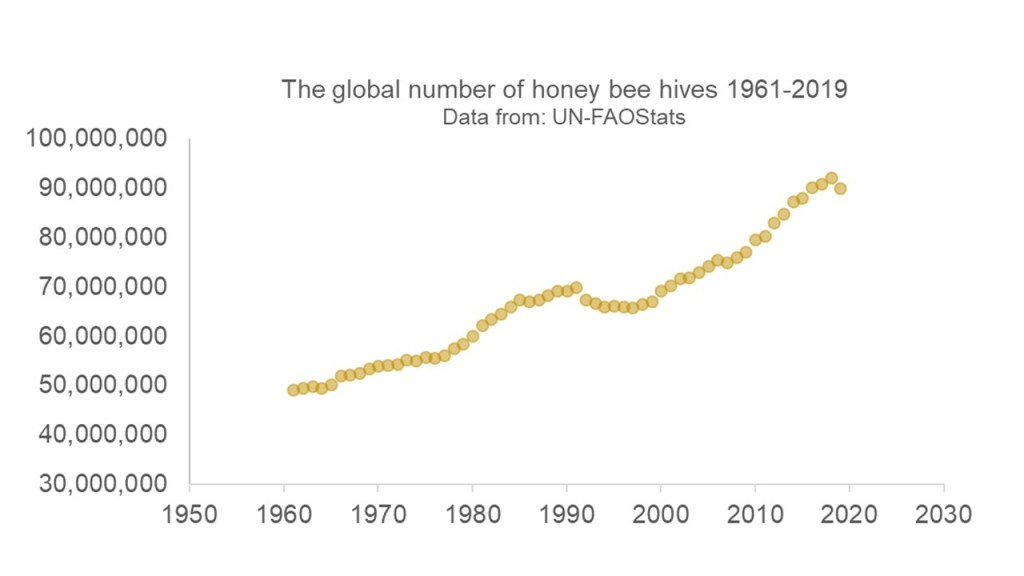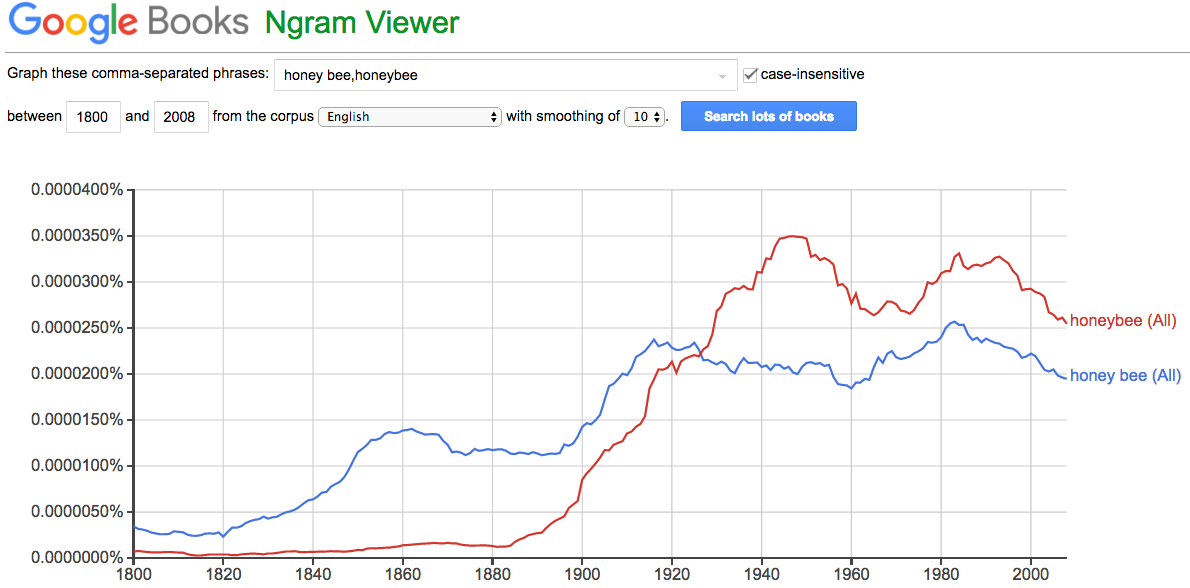
As I mentioned in my previous post, it’s currently Invasive Species Week in the UK. Non-native species which have negative environmental impacts and disrupt infrastructure are a global phenomenon, of course, and almost all regions of the world have been impacted by species that originated elsewhere. One alien species that is of growing concern in Australia is the western honey bee Apis mellifera. We often think of bees as being relatively benign organisms, but a number of species have been introduced around the world and may compete with native species for nectar and pollen, and nesting sites.
In the second paper from my collaboration with Dr Kit Prendergast, we’ve assessed how introduced honey bees change the structure of bee-flower visitation networks in Australian urban habitats. The main finding is that when honey bees are common, they dominate these networks in ways that indicate significant competition with native bee species. You can get a sense of that from the figure above: the honey bees are in red, native bees in yellow, native plants in light green, and non-native plants in dark green. The length of the bars is proportional to the abundance of these plants and bees.
To say that honey bees ‘dominate’ these networks is an understatement: not only are they vastly more abundant than the other bees, but they visit almost all of the different types of flowers in the network, regardless of whether they are native or introduced.
Although the honey bee bullshit machine often claims that western honey bees are dying out, the exact opposite is true: across the world, managed Apis mellifera numbers are higher than ever, as you can see from the following chart based on figures from the United Nations Food and Agriculture Organization (UN-FAO):

Whilst the growth in honey bee numbers is a good thing for honey producers, bee farmers, and small-scale subsistence farmers, there are environmental consequences to the increase in hives, as we have shown.
If anyone wants a PDF of the paper, please use the Contact form. The full reference for the study and the abstract is:
Abstract:
The European honeybee Apis mellifera is a highly successful, abundant species and has been introduced into habitats across the globe. As a supergeneralist species, the European honeybee has the potential to disrupt pollination networks, especially in Australia, whose flora and fauna have co-evolved for millions of years. The role of honeybees in pollination networks in Australia has been little explored and has never been characterised in urban areas, which may favour this exotic species due to the proliferation of similarly exotic plant species which this hyper-generalist can utilise, unlike many native bee taxa. Here, we use a bipartite network approach to compare the roles, in terms of species-level properties, of honeybees with native bee taxa in bee-flower (‘pollination’) networks in an urbanised biodiversity hotspot. We also assessed whether the abundance of honeybees influences overall network structure. Pollination networks were created from surveys across seven residential gardens and seven urban native vegetation remnants conducted monthly during the spring-summer period over two years. There were consistent differences in species-level properties between bee taxa, with honeybees often differing from all other native bees. Honeybees had significant impacts on network properties, being associated with higher nestedness, extinction slopes of plants, functional complementarity and niche overlap (year two), as well as lower weighted connectance and generalisation. These associations all are indicative that competition is occurring between the introduced honeybee and the native bee taxa in bee-flower networks. In conclusion, the introduced honeybee occupies a dominant, distinct position in bee-flower networks in urban habitats in the southwest Western Australian biodiversity hotspot


 It’s interesting to speculate about what might have caused these shifts in use, and it’s possible that in these examples it was the publication of especially influential books that used one term over another and influenced subsequent writers. Could make a good project for a student studying how use of language varies in different time periods.
It’s interesting to speculate about what might have caused these shifts in use, and it’s possible that in these examples it was the publication of especially influential books that used one term over another and influenced subsequent writers. Could make a good project for a student studying how use of language varies in different time periods.